Tiny white bugs in the house can be quite bothersome, often appearing unexpectedly and requiring prompt action for control. One common culprit is the mealybug, which resembles tiny bits of cotton or lint, typically found clustering on indoor plants. These pests can hitchhike indoors on clothing or plants from nurseries, thriving in the comfortable indoor environment.
Another nuisance is dust mites, microscopic insects that feed on shed human skin cells. Found in bedding, upholstery, and carpets, they thrive in humid conditions and can trigger allergic reactions in sensitive individuals.
To manage these tiny white bugs effectively, regular cleaning routines, including vacuuming, washing bedding in hot water, and reducing indoor humidity, are essential. Targeted treatments such as using insecticidal sprays for mealybugs or employing allergen-proof covers for mattresses can help mitigate their presence indoors.
Different Types of Tiny White Bugs in House
Mealybugs
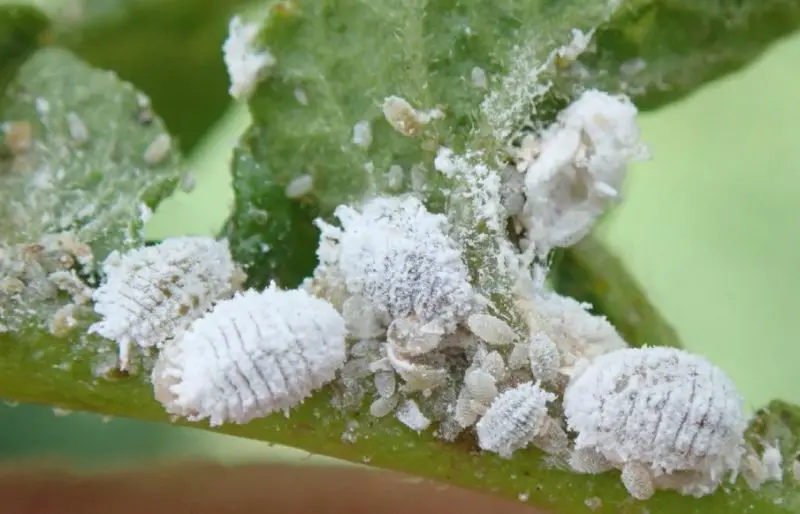
Mealybugs are tiny, white bugs that can grow up to 1.5 inches in length and can resemble dust or lint. These pests usually appear on plants in clusters, creating clumps that resemble fuzzy cotton.
Although they usually live in gardens, they can be carried indoors on clothing, flowers, or plants. Mealybugs might unintentionally enter houses through greenhouse visits because they feed on indoor plants. Mealybugs can injure houseplants, even though they do not bite or cause damage to dwellings.
In order to avoid the heat, they typically move into houses in the early and middle of summer. Natural predators, such as lacewings and ladybugs aid in population control. Furthermore, both indoor and outdoor mealybug infestations can be effectively managed with insecticide and soapy water.
Mold Mites
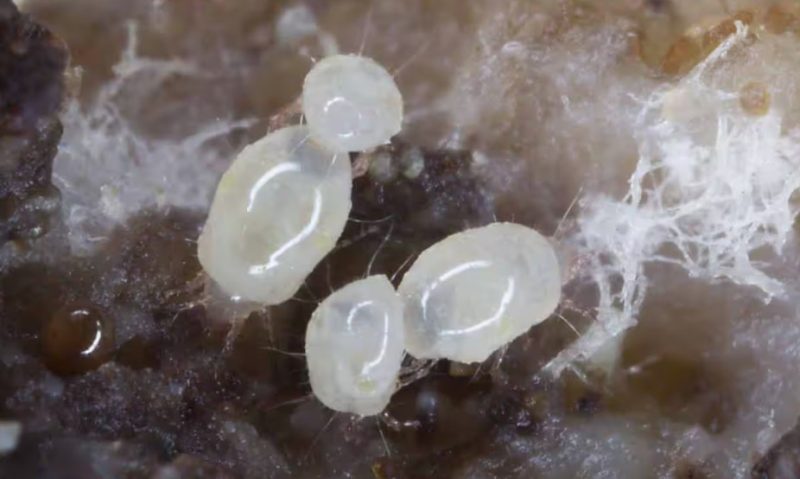
The microscopic, translucent mold mites have the ability to trigger allergic reactions in both the mold they eat and the mites themselves. They are most at home in moist, moldy conditions.
Maintaining indoor air quality and humidity levels is crucial for preventing mold mites. Mold can be stopped from growing by sealing water leaks and enhancing ventilation.
Although individual mold mites are difficult to spot, groups are easier to spot. If the mold is taken out of surfaces such as walls, floors, furniture, or stored clothing, these non-resilient bugs usually vanish.
Mold mites only reside in areas with mold and mildew, unlike whiteflies, who enter homes on accident. One efficient method of managing mold and mold mites is to use a dehumidifier.
Whiteflies
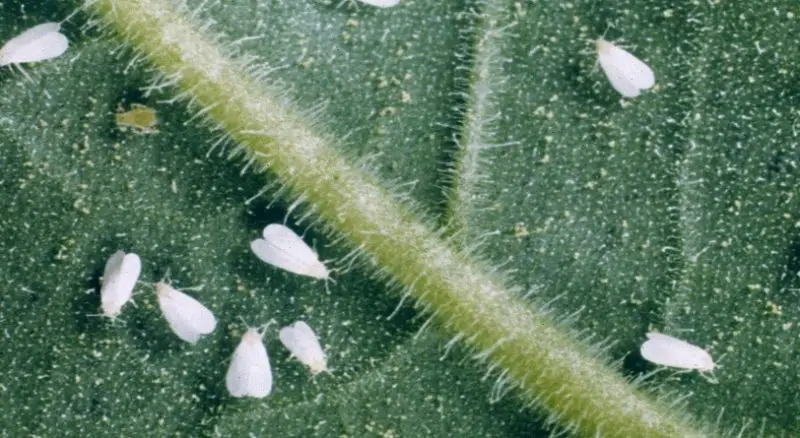
Among the most hazardous small white bugs that resemble lint are whiteflies. They have a history of biting people and creating unpleasant reactions. For those who have allergies, many bites might cause more severe responses, rashes, and irritated, red skin.
Whiteflies are easily detected on clothing because they are hard to see in gardens or greenhouses. These bugs are not readily visible since they eat on the undersides of plant leaves. Whiteflies are oblong-shaped, capable of flight, and damaging to plants. They produce honeydew, which impedes photosynthesis, and feed on plant sap. Additionally, whiteflies damage plant leaves by injecting saliva into them.
Because of its negative effects, insecticide is rarely employed; however, afflicted houseplants can be treated with soap and water.
Dust Mites
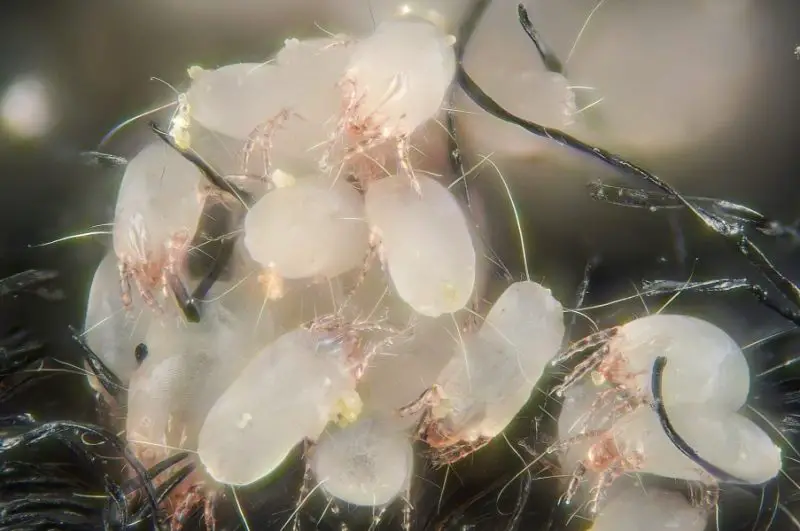
Among the tiniest white bugs, dust mites resemble tiny spiders and lint. They are best suited for interior environments because they feed on human skin cells and flourish in high-humidity houses. Asthma attacks and respiratory issues are known to be brought on by dust mites. Major allergens that cause severe respiratory allergies are their molted skin and excrement.
Look for symptoms of allergies and bites to discover dust mites. Using fine mesh window screens and frequent vacuuming are helpful prevention measures because these bugs are difficult to spot. Reducing humidity and maintaining indoor air quality also aid in delaying the rapid proliferation of dust mites.
Termites
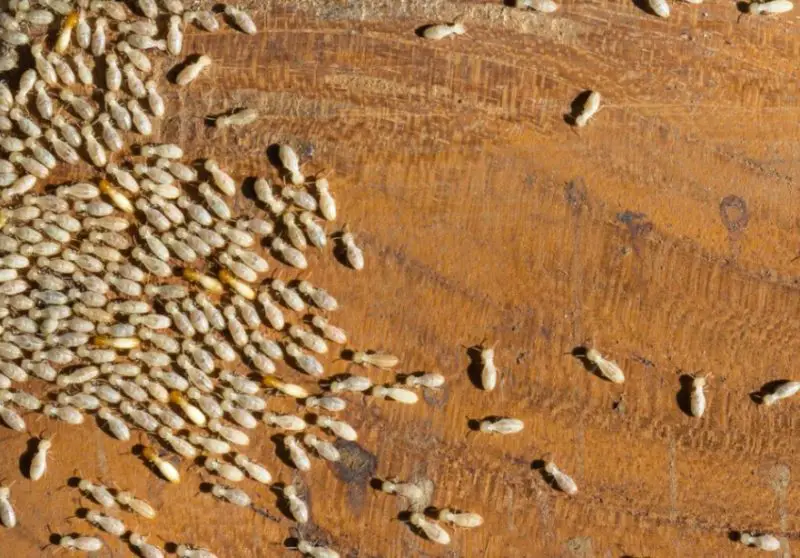
Depending on the extent of the structural damage they do, worker termites in your home might be either white or cream in color. These termites cause serious problems for homes by eating wood. Thousands of termite workers, usually measuring 1/8 or 1/4 inch, can infiltrate a home. They dig galleries in moist regions and are frequently spotted outside woods. Wood has holes that indicate their presence.
Fixing termite infestations requires replacing damaged timber. Reducing indoor humidity and repairing water leaks are two preventive methods for getting rid of moist wood. The partially white termites, called drywood termites, can survive in dry wood and do not need damp wood. Old furniture and firewood draw termites, so store them outside of the house to keep them at bay.
Booklice

Booklice can reach a size of 1mm and are nearly entirely white or tan. Even though they are little and somewhat transparent, you can still see them all over the house. Booklice are infamous for devouring and destroying books and other stored items, as their name suggests. Even in spotless homes, they might grow because they need humidity to survive.
A dehumidifier works well for eliminating booklice. When the temperature falls below freezing, these bugs likewise perish. Opening windows and doors throughout the winter to let the interior temperature fall below freezing for at least an hour is one way to manage the situation. In homes where mold is growing or there is considerable humidity, booklice can arise quickly and without any prior warning.
White Spider Mites
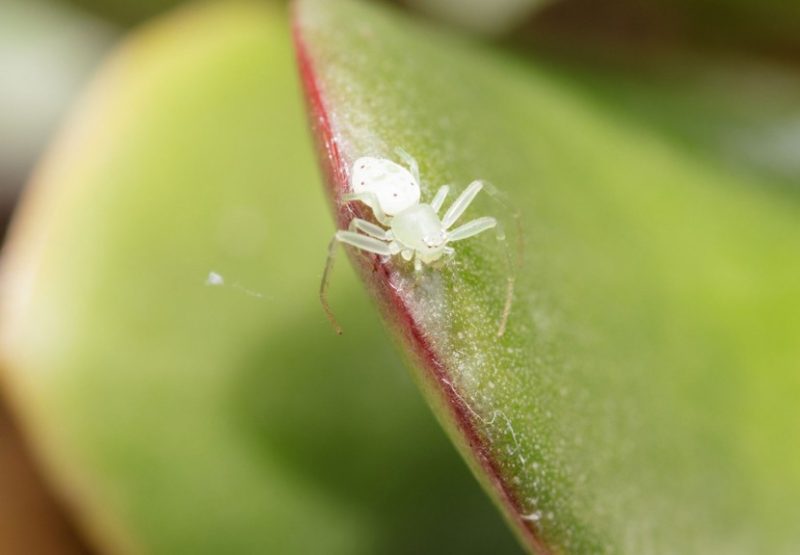
The eight legs of white spider mites resemble spider legs, thus their name. These mites are colored, though translucent white is the most prevalent. White spider mites are tiny, hardly noticeable, and typically observed on plants in the spring. When they get into a significant infestation, they might even destroy the plants they invade in order to feed on them.
Dust particles on indoor plants are frequently mistaken for white spider mites. Taking regular care of houseplants and flowers is the best defense against these mites. Regularly watering your plants will help get rid of them. Consider using specialized sprayers made to fight wood mites and plant mites for more severe infestations.
Woolly Aphids
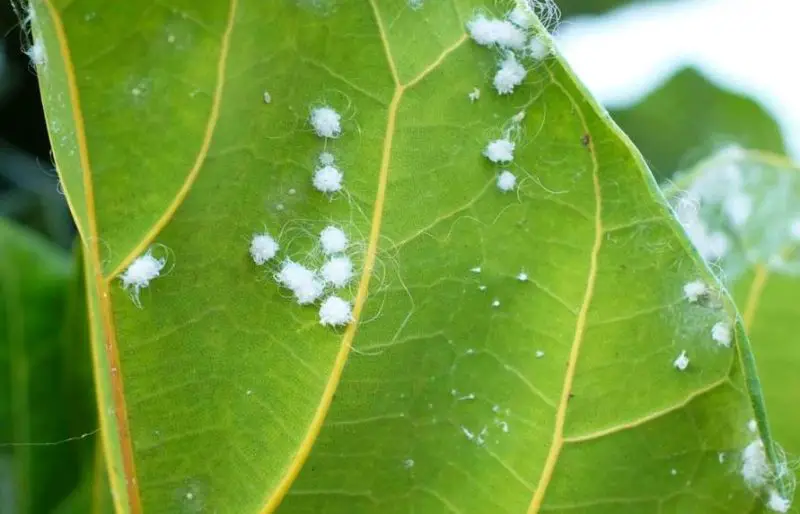
Woolly aphids are tiny white bugs that feed on plant sap. They can be as little as 1 mm in size and are frequently hardly noticeable on their own. Usually, they are observed in groups, particularly during eating. These aphids choose the underside of leaves because it shields them from common foes, ladybugs, which are predators.
Woolly aphids can be easily controlled; although there aren’t many herbicides made especially for them, washing plants with a powerful water jet works well. Woolly aphids, which are typically linked to a certain plant species that they feed only on, can seriously harm gardens and crops. In order to manage their infestation and stop extensive damage, afflicted plants must be regularly observed and timely control measures must be implemented.
Body Lice

Body lice are among the most troublesome types of tiny bugs as they feed on human blood. These tan or off-white colored insects can be as small as a sunflower seed. Similar to head lice, they live on the skin of their host, feeding on blood from various parts of the body.
Encountering body lice necessitates immediate action, such as taking a thorough shower, due to their potential to cause skin infections. These bites can lead to changes in skin texture, even without infection, making affected areas thicker or less elastic.
Beyond skin conditions, body lice are notorious for spreading diseases, with typhus being a common illness associated with their bites. They are prevalent among individuals who lack regular access to bathing facilities, such as homeless populations or those in war-torn regions.
Preventing body lice involves avoiding contact with infested individuals and maintaining personal hygiene through regular bathing.
Springtails
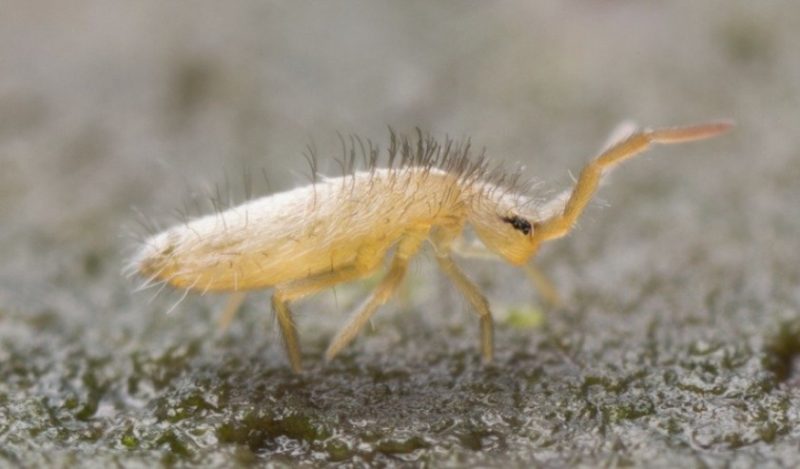
Springtails, primarily brown or black with some species in a white sub-genus, can grow up to around 1/8 inches in size. These small bugs thrive and multiply in environments with high humidity and mold presence within homes. While springtails do not bite, they can contribute to respiratory allergies, exacerbated by the mold they feed on.
Commonly found in rooms with elevated humidity levels and plant material for them to feed on, springtails may also consume plant roots. Effective control measures include reducing indoor humidity to discourage their proliferation. Additionally, the presence of springtails can indicate underlying water leak issues, a primary cause of mold growth. Remediation involves addressing hidden water leaks promptly and removing damaged wood, which is prone to mold infestation.
Reducing irrigation frequency in gardens surrounding the home can also help minimize springtail populations, as they thrive on moist environments, including plant roots.
Pot Worms
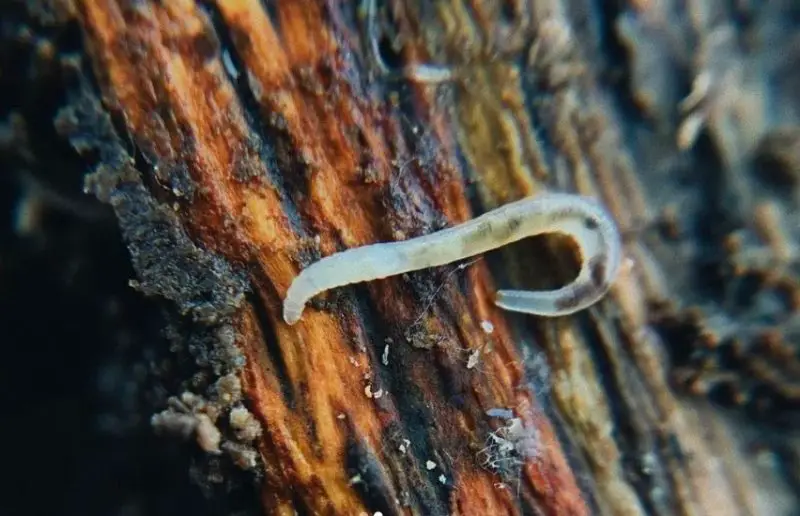
Pot worms are slender white worms that thrive in moist compost, commonly found in outdoor potted plants. They can also make their way indoors when potted plants are brought inside from outdoor settings, especially after summer.
These worms are naturally present in compost but proliferate rapidly when conditions such as moisture levels or pH change. Overwatering pots or gardens with compost can encourage pot worm infestations. Organic matter in soil contributes significantly to their growth, enriching the nutrient content and fostering pot worm multiplication.
While pot worms can move from garden soil to potted plants and subsequently into homes, they pose no direct threat to humans or other worm species. They are often introduced inadvertently with potted plants purchased from nurseries where they naturally inhabit compost-rich environments.
Clothes Moths
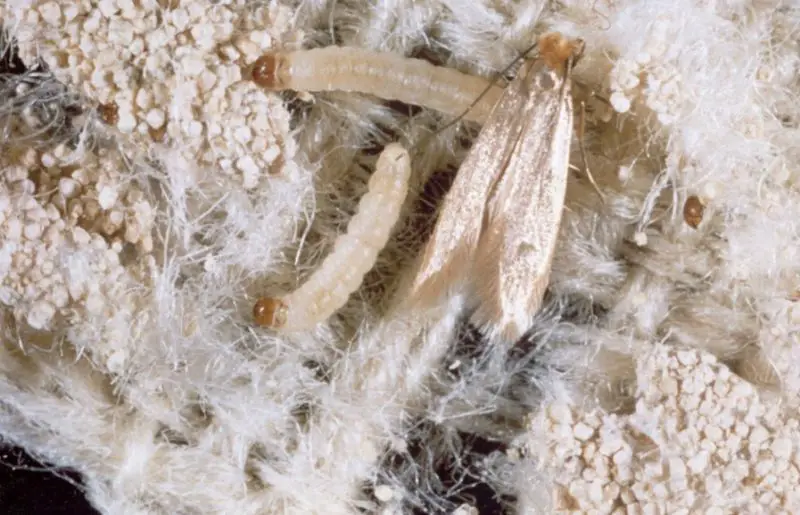
Clothes moths, such as Tineola bisselliella, exhibit white coloring during their caterpillar stage. These moths can grow up to 13mm, with larvae reaching similar lengths. They are notorious for residing in and feeding on clothes fibers, primarily indoors.
The impact of clothes moths is often seen on neglected or improperly cleaned garments. Effective control methods include dry cleaning, which eliminates moths and their eggs through extreme temperatures. Freezing garments used to be a common method for killing moths and their eggs, but dry cleaning is now preferred for its convenience and efficacy.
Additional preventive measures include brushing or vacuuming old clothes before storage to remove moth eggs and larvae. Mothballs and aerosols containing permethrin are toxic yet effective against clothes moths, though storing clothes in airtight containers is necessary due to their toxicity. Natural deterrents like dry lavender bags can also help ward off clothes moths when stored with garments.
Thrips
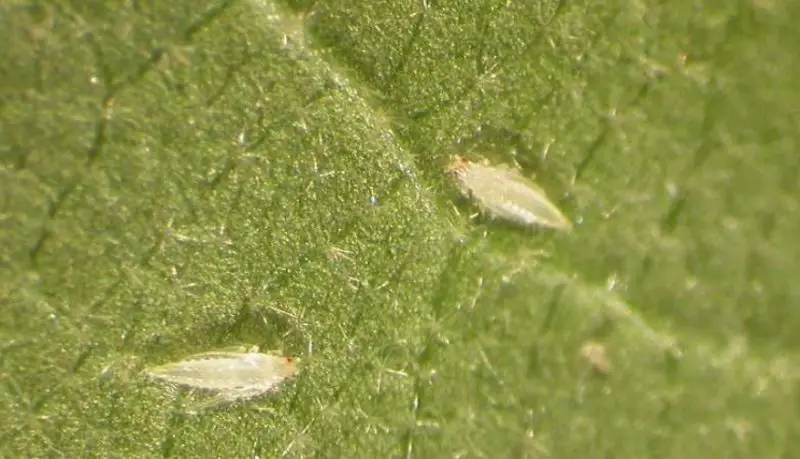
Thrips are highly damaging tiny bugs, often white or off-white in color, found in gardens. These insects can measure as small as 1/25 inch and are sometimes difficult to detect visually. Signs of thrips infestation include discolored leaves on plants nearing death.
Thrips feed on a variety of vegetables, such as beans, carrots, and onions, and can also infiltrate indoor environments through potted plants. Some species of thrips are known to bite humans, often mistaking them for plant material.
Controlling thrips can be achieved through traps, such as sticky traps strategically placed around the garden near vulnerable vegetables. Additionally, releasing predatory insects like pirate bugs, ladybugs, and lacewings can effectively manage thrips populations around the home, reducing plant damage and ensuring healthier gardens.
Cottony Cushion Scale
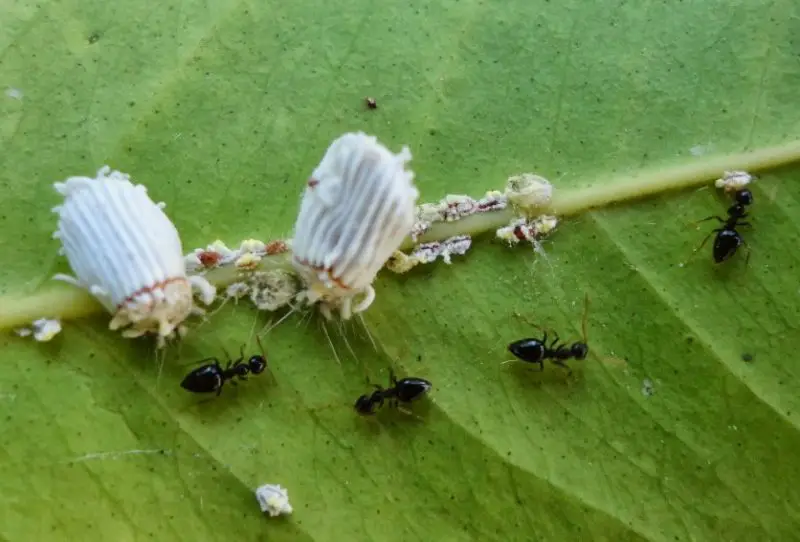
Cottony Cushion Scales (Icerya purchasi), despite their origin in Australia, now prevalent in the US, can become problematic indoors if introduced via infested plants. These tiny insects are characterized by their white, fuzzy appearance in females, while males exhibit a red body coloration.
Once inside homes, Cottony Cushion Scales can pose a threat to indoor plants, particularly those sensitive to scale infestations. They feed on plant sap, leading to weakening and eventual decline of the host plants.
Effective management indoors involves careful inspection of new plants for signs of infestation before bringing them indoors. Quarantine measures can help prevent scale spread to other plants. Additionally, controlling humidity levels and maintaining plant health can deter scale establishment indoors.
Treatment options include physical removal of scales, using insecticidal soap or neem oil, and introducing natural predators like ladybugs if feasible. Regular monitoring and prompt action are key to preventing severe damage from Cottony Cushion Scales inside your home.
True Cochineal bug
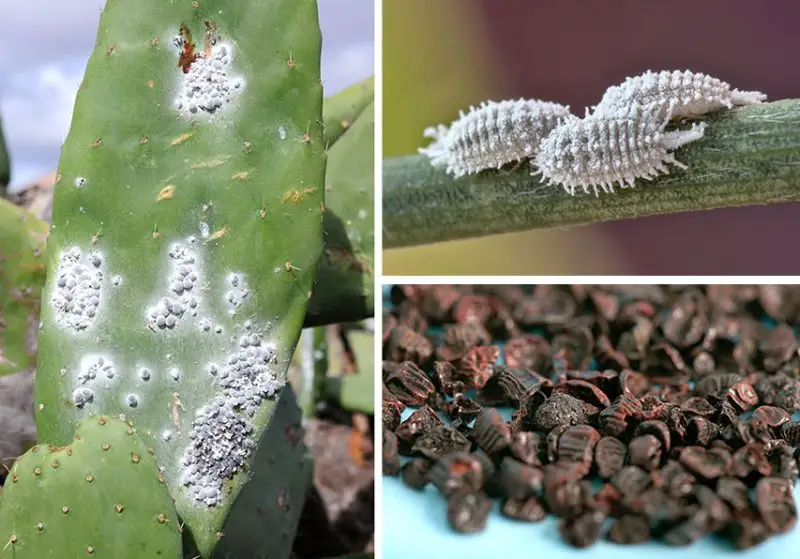
The adult male True Cochineal bug (Dactylopius coccus) is completely white and typically found in the hottest regions of the US, where they feed exclusively on cacti. These bugs are known for piercing cacti to suck out their sap.
After emerging from their nymph stage, True Cochineal bugs develop a waxy outer coating and gather in groups on cacti. They use sharp, straw-like mouthparts to extract fluids from the plants. Both nymphs and adults can cause significant damage to cacti, leading to discoloration, swelling, and even death in severe cases.
Indoors, preventing True Cochineal bugs involves careful inspection of new cacti before bringing them home. Quarantine infested plants and treat with insecticidal soap or neem oil. Pruning heavily infested areas and maintaining plant health can also help mitigate infestations. Regular monitoring and early intervention are crucial for managing True Cochineal bugs indoors effectively.
Beech Scale
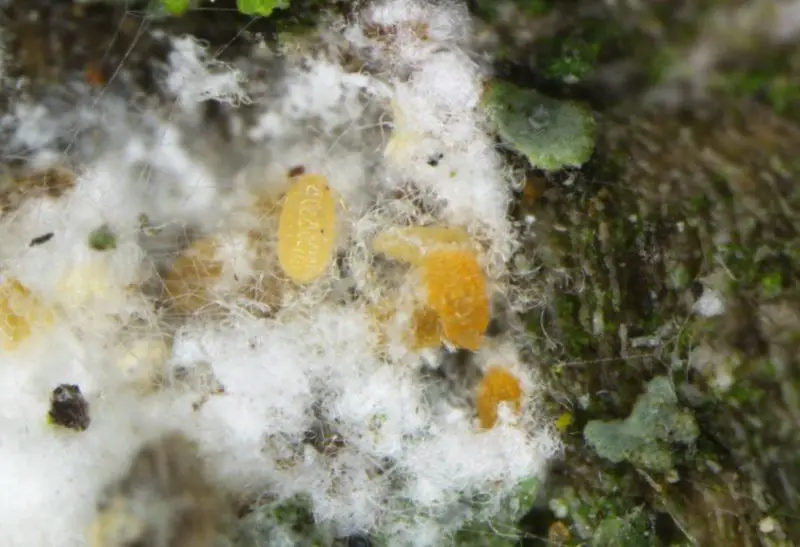
The Common Beech Scale, also known as Beech Scale (Cryptococcus fagisuga), is a tiny white insect that poses a threat to beech trees in Europe and North America. These bugs settle on tree bark, where they feed on tree sap, eventually weakening the tree.
Beech Scales are minuscule, ranging from 0.5 to 1 mm in size, making them challenging to detect individually on bark. They are more noticeable when feeding in groups, resembling dust particles.
Effective management indoors involves prompt action. Infested trees should be washed with water to remove the scales. Regular monitoring and early intervention are crucial, as untreated infestations can lead to significant damage and potentially kill the tree.
Preventing the introduction of infested plant material and maintaining tree health through proper watering and fertilization can also help mitigate Beech Scale infestations indoors.






